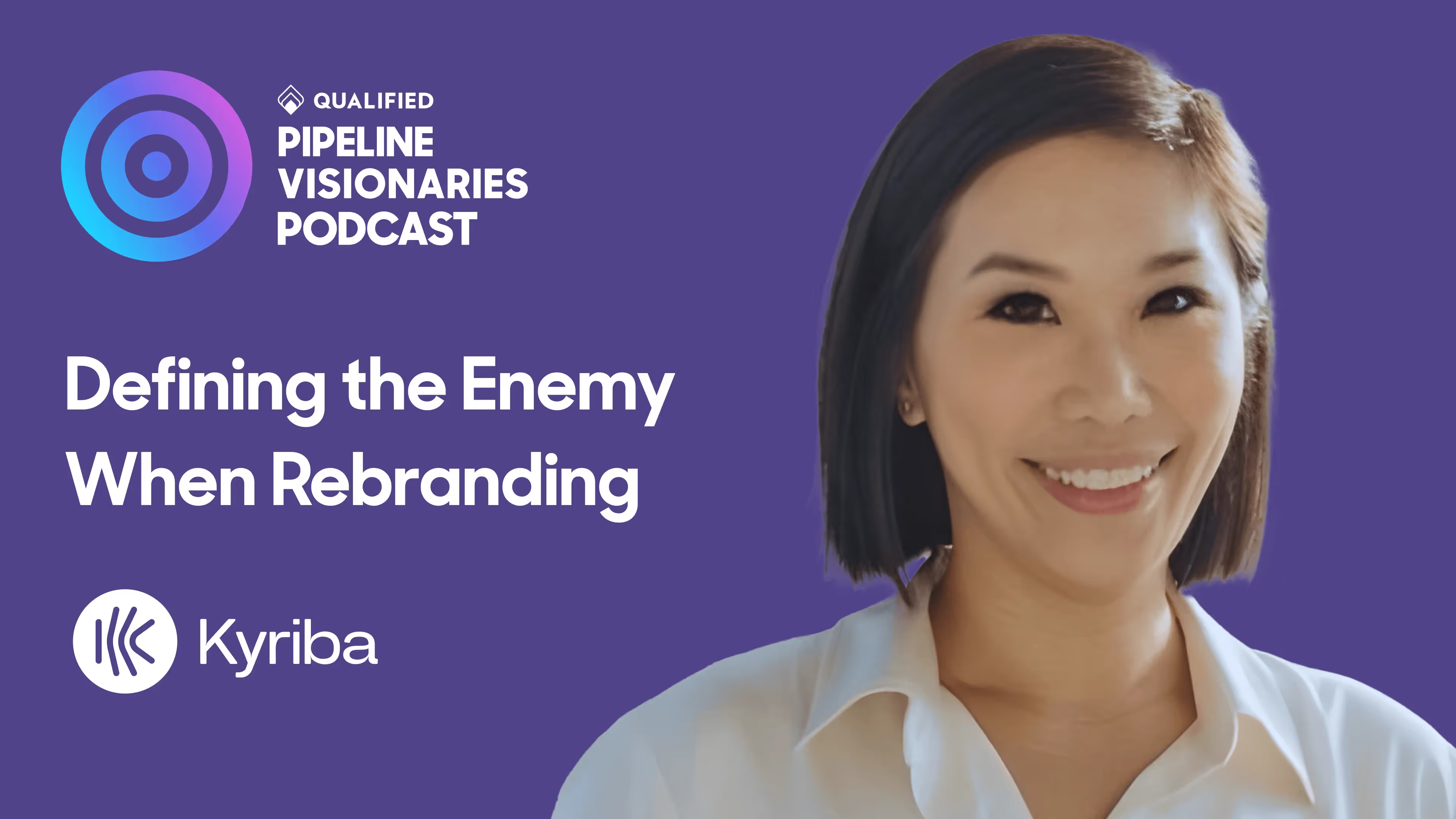Defining the Enemy When Rebranding
April Moh, CMO at Kyriba, shares about defining the enemy and the hero during your rebrand.




April Moh, CMO at Kyriba, shares about defining the enemy and the hero during your rebrand.

This episode features an interview with April Moh, CMO at Kyriba, leader in cloud treasury and finance solutions, delivering mission-critical capabilities for cash and risk management, payments and working capital solutions.
In this episode, April shares her expertise on managing perceptions through PR and building a demand creation arm from scratch. She also dives into the process of rebranding, and the framework they used when crafting their strategic narrative.
Key Takeaways:
Stay up to date with weekly drops of fresh B2B marketing and sales content.
April Moh, CMO at Kyriba, shares about defining the enemy and the hero during your rebrand.


This episode features an interview with April Moh, CMO at Kyriba, leader in cloud treasury and finance solutions, delivering mission-critical capabilities for cash and risk management, payments and working capital solutions.
In this episode, April shares her expertise on managing perceptions through PR and building a demand creation arm from scratch. She also dives into the process of rebranding, and the framework they used when crafting their strategic narrative.
Key Takeaways:
Stay up to date with weekly drops of fresh B2B marketing and sales content.
April Moh, CMO at Kyriba, shares about defining the enemy and the hero during your rebrand.


This episode features an interview with April Moh, CMO at Kyriba, leader in cloud treasury and finance solutions, delivering mission-critical capabilities for cash and risk management, payments and working capital solutions.
In this episode, April shares her expertise on managing perceptions through PR and building a demand creation arm from scratch. She also dives into the process of rebranding, and the framework they used when crafting their strategic narrative.
Key Takeaways:
Stay up to date with weekly drops of fresh B2B marketing and sales content.
April Moh, CMO at Kyriba, shares about defining the enemy and the hero during your rebrand.



This episode features an interview with April Moh, CMO at Kyriba, leader in cloud treasury and finance solutions, delivering mission-critical capabilities for cash and risk management, payments and working capital solutions.
In this episode, April shares her expertise on managing perceptions through PR and building a demand creation arm from scratch. She also dives into the process of rebranding, and the framework they used when crafting their strategic narrative.
Key Takeaways:
Discover how we can help you convert more prospects into pipeline–right from your website.